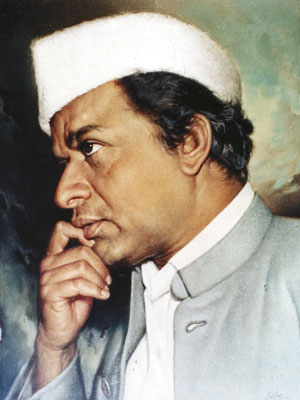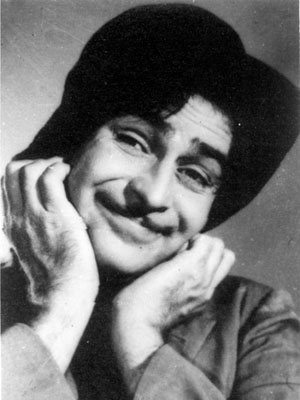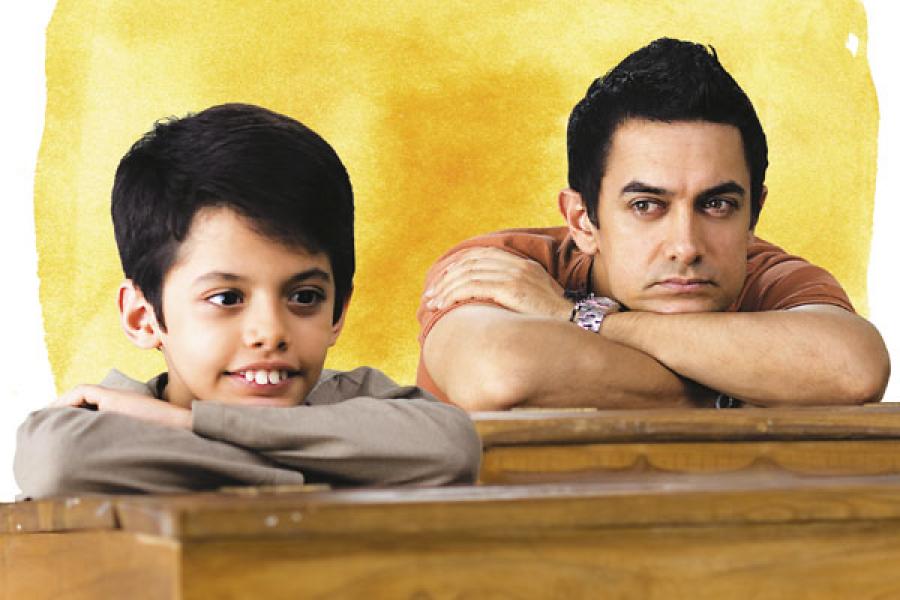
The Escape from Escapism In the Hindi Film Industry
Has popular Hindi cinema rediscovered its conscience?
Who’d have thought an idea from a mainstream film would actually take root in real life? But ‘Gandhigiri’, from Rajkumar Hirani’s Lago Raho Munna Bhai, became quite a rage. Newspapers were flooded with stories of people using passive resistance; seminars were held; soon, the word passed into common usage.
These films brought social issues to the forefront of public consciousness using the mainstream format of entertaining storytelling, songs, romance, stars and all.
Just like the time when Achhut Kanya, a love story doomed by untouchability, reportedly made Gandhi weep, and made the masses aware of its evils; or when V. Shantaram’s anti-dowry diatribe Dahej made idealistic youth swear publicly to reject dowry.
 But when did popular cinema come to be equated only with mindless entertainment?
But when did popular cinema come to be equated only with mindless entertainment? Flashback to the euphoric post-Independence days. Mainstream filmmaker Raj Kapoor teamed up with Leftist journalist K.A. Abbas and made films like Awaara, questioning patriarchy, and Shree 420, unabashedly and sentimentally pro-poor. He produced Jis Desh Mein Ganga Behti Hai about rehabilitating dacoits, and Boot Polish about child labour. Shantaram, B.R. Chopra, Chetan Anand and Bimal Roy also made strong socially relevant films that were also successful at the box-office. They had the support of the politically aware writers and lyricists of the Progressive Writers’ Movement; their compassion for the underprivileged was reflected in their cinema and they had the following of a similarly idealistic and aware audience that patronised their films.
By the time the 60s rolled around, audience tastes veered towards romantic shot-in-Kashmir fluff, typified by the films of Nasir Hussain and Manmohan Desai. Perhaps they’d had enough of socialist ‘propaganda’.
The seriousness with which the Masters treated the medium was gone. Gone too was the element of thought, the literary quality of scripts and lyrics, the genuine emotions, the creative storytelling.
Then in the 70s and early 80s, the New Wave challenged formulaic commercial cinema. Rejecting the song-dance style, these filmmakers made ‘statement’ films. Mrinal Sen’s Bhuvan Shome and Shyam Benegal’s Ankur heralded the movement of which Govind Nihalani’s Ardh Satya and Ketan Mehta’s Mirch Masala marked the apogee.
Many of these parallel cinema directors were graduates of the Film and Television Institute of India, where they were exposed to world cinema. They were slightly embarrassed by the frivolity of their own, and keen on formulating a new style that spoke of the issues of the time, of rural oppression and urban angst. The media hailed the art cinema movement, but it spluttered and died out soon enough — at least in Mumbai. (Later the media was accused of supporting even bad art films, speeding up its demise: Newspaper readers came to believe that anything reviews gushed over must be boring.)
Still, it was a richly-varied period that took cinema to a big high. Mega-budget block busters were welcomed as much as middle-of-the-road and art film offerings. The audiences cut through class lines and were amazingly receptive. The arrival of television, and the video revolution, shook up the film industry. Two things happened as a result of this home entertainment boom. First, the educated middle class that patronised parallel and middle cinema chose to stay away from the movie halls. Coupled with an already weak exhibition sector for offbeat cinema, this rang the death knell for films that strayed from the mainstream. Second, filmmakers and actors who would still be struggling to get a foot into the industry found an alternative.
When audiences changed, films had to target the lower classes, who still came to the cinema. Quality dropped drastically: By the end of the decade, excessive violence and sex became the norm, women were completely marginalised. The other disturbing trend was the profusion of South Indian filmmakers who brought in regressive subjects, an uninventive, assembly line directorial style. And more than anything else, the 80s will go down as the decade of star sons and disco music.
By the 90s, television and video had severely cut into cinema audiences. Piracy was rampant and the industry was feeling the pinch. The satellite and cable boom made matters worse. Suddenly there was an abundance of entertainment choices.
Filmmakers fought back by making bigger, brighter movies, more brainless than the fare on the 50-odd channels. (Ironically, the rival television eventually became an ally, with channels being used to promote films through countdown, interview and behind-the-scenes shows.)
When music companies like Tips, Venus, Time and Polygram got into film production, they dictated how films would be made: Keeping their eye on the music-sales charts. Films that were already lacking in sense and direction were even further dumbed down.
The murder of Gulshan Kumar, T-Series head, brought out into the open what was only whispered about: Bankrolling from the underworld. The crackdown on the underworld following the bomb blasts in Mumbai had made stars and producers wary of their financial sources, especially since many of them had been summoned to police headquarters and questioned about their Dubai connections.
The riots in Mumbai after the Babri Masjid demolition also had an impact on films. Some films mentioned politically motivated communal riots. Others went further: Bombay, Naseem and Zakhm had the riots as the backdrop. The power-hungry politician and the underworld-supported terrorist became the villains of the 90s. Militancy was tackled in films like Roja, Khal Nayak, Droh Kaal, Diljale and Maachis. In Sarfarosh, director John Mathew Matthan even named Pakistan as the instigator of terrorism in India.
The satellite invasion, terrorism and organised crime were all perceived as an attack on India’s cultural sovereignty. A direct result wasn’t just a spate of patriotic films; you also had the back-to-Indian-tradition trend, which Hum Aapke Hain Koun started, and Dilwale Dulhania Le Jayenge took higher.
This was, perhaps, the only time Hindi commercial cinema reacted so strongly to what was happening around it — albeit not so much because they cared or even understood, more because it brought people back to the theatres.
By the end of the century, there was the hint of a resurgence of alternative cinema.
There was a shift in audience profile once again. Since the big spenders were, increasingly, young people, films across the spectrum targetted them. College-educated young professionals wanted fresh faces, trendy styles of filmmaking and danceable music. Even an ageing Bachchan, demigod of previous decades, found the going tough, in spite of being voted the star of the millennium.
Around this time, there was controversy about increasing vulgarity in films with songs like Choli ke peeche and Meri pant bhi sexy, and most of David Dhawan’s oeuvre, being the biggest culprits. But the astounding success of Sooraj Barjatya’s Hum Aapke Hain Koun swept aside all competition for the next few years and its record-breaking run induced other filmmakers to make extravagant family dramas. What was once a minor genre now took centre-stage. The industry noted that in spite of satellite TV, families were coming back to the theatres. To keep them enthralled, films had to have an element of larger-than-life showmanship: Designer costumes, foreign locations, great music, major hype.
More and more filmmakers also started making movies with an eye on the lucrative overseas market. Films like Dil Se, Taal, Hum Dil De Chuke Sanam and Devdas did great business abroad. It seemed that self-consciously ‘Indian’ films — rituals, values, colour — were here to stay.
Only Ram Gopal Varma and his protégés swam against the tide, with their gritty gangster sagas. English August and Hyderabad Blues, coming in just before the multiplex boom, brought in the New New Wave: Urban filmmakers who wanted to make non-mainstream films, to tell stories that came from their own backgrounds, but without losing the high-spending multiplex-goer. After all, with ticket prices being what they are, would even the most dedicated movie buff want to spend around Rs. 300 watching a director’s version of ‘The Truth’? If they can’t be relied on to come see the current star doing the same old pyaar-mohabbat-dosti thing, they are hardly likely to go for some bleak rural saga. They want their money’s worth, not commercial or artistic con jobs. There is no loyalty to directors and certainly no desire for punishment in the name of meaningful cinema. Dil Chahta Hai defined what would appeal to the youth for years to come.
 Filmmakers, always following the money, started making films for a younger, upper class audience, and since this section had no pressing problems, like poverty or unemployment, most films focussed on romance, and continue to do so. The new filmmakers who call the shots are, mostly, from film industry families; they’re clueless about the socio-economic problems the country faces. Their audiences are in Indian cities and abroad. The only ‘issue’ that they know of is terrorism, since it has reached their doorstep, so it pops up sporadically in their films.
Filmmakers, always following the money, started making films for a younger, upper class audience, and since this section had no pressing problems, like poverty or unemployment, most films focussed on romance, and continue to do so. The new filmmakers who call the shots are, mostly, from film industry families; they’re clueless about the socio-economic problems the country faces. Their audiences are in Indian cities and abroad. The only ‘issue’ that they know of is terrorism, since it has reached their doorstep, so it pops up sporadically in their films.The targeting of urban, westernised, wealthy audiences alienated the traditional mofussil so much that a parallel industry of low budget Bhojpuri films blossomed.
Still, despite this flurry of high-glam films shot to appeal to NRIs and bring in dollar returns, the last few years have seen the rise of directors like Anurag Kashyap, Vishal Bhardwaj, Dibakar Banerjee, and, of course, Rajkumar Hirani and Aamir Khan, trying to break the mould, but within the framework of commercial cinema. In effect, they are going back to their cinema ancestors, who sugar-coated their social consciousness with song-dance-dream sequences, glamour and melodrama. The difference is that the new lot are essentially urban filmmakers. Their influences are Western, and they don’t ever go near the kind of realism the earlier new wave did.
Films like Dev D, Love Sex Aur Dhokha and Kaminey may win critical acclaim, but a film has very little chance of reaching the cinemas without a star driving it. On the other hand, stars like Amitabh Bachchan, Aamir Khan, even NRI darling Shah Rukh Khan, are experimenting with content, if not with form. If films like Rang De Basanti, Chak De, Paa, Taare Zameen Par, 3 Idiots did well, it was because audiences wanted stars to get on a soap box and talk to them about patriotism, compassion and problems of the youth, while they get their entertainment fix from the plain vanilla entertainers like Jaane Tu Ya Jaane Na and Ajab Prem Ki Ghazab Kahani.
Young stars and filmmakers live in a media-supported, designer bubble in which the ‘look’ is more important than getting the content right. They get reams of publicity for what they wear and how they sculpt their bodies to get into beach wear. Their stories may have matured a little as far as personal relationships and sex are concerned — the censors have loosened up too — but they live in a fairytale limbo otherwise. That’s the life they know, that’s the life they portray and when they do something ‘different’ (as the recent Kurbaan and Raavan proved), they show just how clueless they are about ground reality. The middle and lower class, and the rural poor, have all but vanished from Bollywood cinema. The poor little rich boy that Ranbir Kapoor played in Wake Up Sid is as deep and wide as they can go.
Farmers may commit suicide, Maoists may go on a rampage, corruption may rise, khaps may kill — it hardly reflects in our cinema. Things that would have made directors of the erstwhile parallel cinema seethe are not even blips on the radar of today’ urban filmmakers.
Aamir Khan’s production of Anusha Rizvi’s Peepli Live is reported to be on farmer suicides. Perhaps there is hope…
(This story appears in the 16 July, 2010 issue of Forbes India. To visit our Archives, click here.)
-
 Ksantypa
KsantypaInteresting article. But -as a big fan of South Indian cinema I have to ask about this: "The other disturbing trend was the profusion of South Indian filmmakers who brought in regressive subjects, an uninventive, assembly line directorial style." Here, which filmmakers exactly do You mean? Because in next paragraph you write about RGV as only one 'against the escapist tide' and he is from South (AP). Director of 'Hyderabad Blues' Nagesh Kukunoor also. So which are these regressive South Indian filmmakers?
on Jul 5, 2010 -
 Harsha Vardhan Madiraju
Harsha Vardhan MadirajuThis was what I was exactly thinking of just half an hour ago, sitting at Dominos, cheesing the Pizza and watching the Bollywood ga ga on Zoom. In all of the songs I watched over a pizza for 20 minutes, all of them sounded to me as if they are the same. And you can argue, that that's why Bhojpuri has taken a bigger picture which is really appealing the families. As per me eventually those Bhojpuri movies are the alter egos for all our Saas Bahu and Family Feud soaps, as I tried to enjoy some over the famous Mahua Channel. As also having watched Telugu movies - with the Made in Tollywood brand - that spoke on suicides, Maoists etc. they are not appealing to a larger mass. Might be because they don't also convey the true picture on ground, where a common man suffers at the end of the day - as if trying to portray that the Maoists are right to fight. And these are not seeming to be money makers for the production companies. And yes there is another sect, of Film makers that live up on experimentation. Such films really succeed because they appeal and sound different from the counterparts of their times. May it be Dil Cahta Hai to Munna Bhai or Taare Zameen Par, films like these really make an impact, rather than the stereotypes. But these are our once in a blue moons. But in the times to come, I feel that we will still be seeing the movies that are meant for the Urban Youth and the cosmopolitan NRI's as they are the ones that the producers can bank upon for their investments. This will probably true that such movies will be seeing larger success in the current zamana as Black Eyed Peas said about the 'Now Generation' - where we want money, faster internet, Google and Facebook - and the industry would really be looking at appealing them.
on Jul 5, 2010 -
 Geetha
GeethaThank you for this well-written article on the journey of Hindi cinema through the ages.
on Jul 5, 2010
















